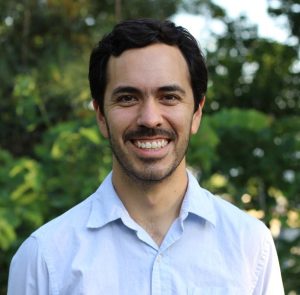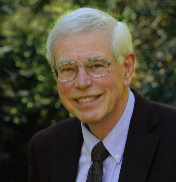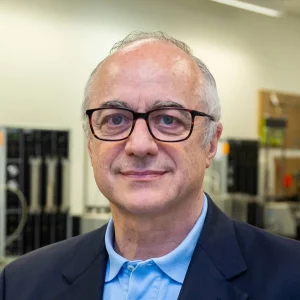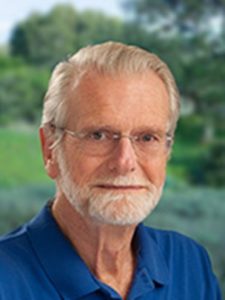Speaker Information: 6th Kenji Ishihara Colloquium Series on Earthquake Engineering
Punctuated Resilience, Climate Change and Bio-Geotechnics
Speakers and Abstracts
Alejandro Martinez
Associate Professor, University of California, Davis
Snakeskin-inspired piles and soil anchors: from bio-inspiration to field implementation
Abstract: Many aspects of the construction and performance of infrastructure rely on load transfer between soils and structures. Examples include deep foundations, soil anchors, and geosynthetics. This presentation will highlight the application of bioinspiration towards the transfer of load at soil-structure interfaces, with an emphasis on piled foundations and soil anchors. A dilemma in design exists: while large skin friction promotes a large capacity, it can also lead to difficulties during installation (i.e. refusal). To address this, surfaces with textures inspired by the belly scales of snakes were designed to assess the potential for mobilizing direction-dependent friction, and centrifuge and field load tests were performed to assess their effect the shaft capacity of piles and soil anchors. The laboratory, centrifuge, and field results reveal that greater skin friction is mobilized when the surfaces and piles are displaced in the cranial direction (i.e. soil moving against asperities) than when they are displaced in the caudal direction (i.e. soil moving along asperities). This direction-dependence is shown to be due to the greater soil deformation induced when the surfaces are displaced in the cranial direction. Cyclic interface shear tests and centrifuge load tests inform the degradation of skin friction mobilized by the bioinspired surfaces and piles. This presentation will discuss the potential benefits of the snakeskin-inspired surfaces in sites with sandy and clayey soils.
Bio: Alejandro Martinez is an associate professor at the University of California Davis. He obtained his Ph.D. and M.S. degrees from Georgia Tech in 2015 and 2012, respectively, and his B.S. from the University of Texas at Austin in 2010. His research aims to further the understanding of soil behavior and soil-inclusion interactions involved in geotechnical engineering. His research interests include bio-inspired geotechnics, soil-structure interactions, offshore geotechnics, and fabric effects on soil behavior. His research employs a combination of experimental laboratory, centrifuge modeling, and numerical techniques. In 2020, he received the NSF CAREER award and in 2022 he received the ASCE Arthur Casagrande Career Development Award.
Thomas O’Rourke
Thomas R. Briggs Professor of Engineering Emeritus, School of Civil and Environmental Engineering, Cornell University
Punctuated Resilience
Abstract: The concept of punctuated equilibrium, as advanced by Stephen Jay Gould and Niles Eldredge, is applied to infrastructure in this presentation. Professor O’Rourke will discuss how key infrastructure policies have been punctuated by hazards that affect the built environment. Just as the fossil record is composed of flash pictures that imply catastrophic change, so the record of hazards can provide a similar impression. Hazards that occurred once every generation, now occur almost yearly. Professor O’Rourke will explore how frequent hazards, such as hurricanes, affect resilience, and become a mechanism for improving the engineering and management of critical facilities. The agents of change that lead to improved policies and approaches are explored, including new technologies and the engagement of community support.
Bio: Tom O’Rourke is the Thomas R. Briggs Professor of Engineering Emeritus in the School of Civil and Environmental Engineering at Cornell University. He is a member of the US National Academy of Engineering, Distinguished Member of ASCE, International Fellow of the Royal Academy of Engineering, Member of the Mexican Academy of Engineering, and a Fellow of the American Association for the Advancement of Science. He authored or co-authored over 440 technical publications, and has received numerous awards for his research. His interests cover geotechnical engineering, earthquake engineering, underground construction technologies, engineering for large, geographically distributed systems, and geographic information technologies and database management.
J. Carlos Santamarina
Professor & G. Wayne Clough Chair, Georgia Institute of Technology
The Energy-Climate-Livability Challenge: New Roles for the Earthquake Engineering Community
Abstract: Climate change is rapidly emerging as a significant threat to daily life, with profound implications for livability and the infrastructure. Caused by our reliance on fossil fuels, climate change affects water and food security, urban development, migration and consumption patterns, and policy at both national and international levels. The multifaceted consequences of the energy-climate-livability challenge are already testing vulnerabilities across all sectors, disproportionately affecting the most susceptible populations. The earthquake engineering community has a role to play in addressing these evolving challenges. Key areas include the seismic design of new and retrofitted civil infrastructure, the reimagined transportation systems, new onshore and offshore energy infrastructure (wind, solar, and storage systems – ranging from household to grid-scale), and mining operations for critical minerals essential for the energy transition. Special attention should be given to seismicity induced by energy projects (geothermal and hydraulic fracturing for oil and gas) and the interaction between more frequent extreme climatic events and seismic activity (e.g., more pronounced debris flows). Furthermore, the earthquake engineering community’s expertise with cyclic loading can be extended to the analysis of energy infrastructure subjected to low-amplitude repetitive loads, including storage systems, wind turbines, and thermally active components.
Bio: J. Carlos Santamarina (Professor and Clough Chair, Georgia Tech) earned his bachelor’s degree from the Universidad Nacional de Córdoba and completed graduate studies at the University of Maryland and Purdue University. Throughout his career, he has taught at NYU-Poly, the University of Waterloo, and King Abdullah University of Science and Technology. His research team utilizes a combination of experimental and numerical methods to investigate geomaterials (sediments, fractured rocks, and complex fluids) within the context of energy geo-science and engineering, from resource recovery to energy and waste geostorage. He delivered the50th Terzaghi Lecture on Energy Geotechnology and is a member of both Argentinean National Academies.
Christopher Wills
Professor Emeritus, University of California, San Diego
Punctuated Equilibrium and How It Works
Abstract: In 1972, Niles Eldredge and Stephen Jay Gould introduced the term “punctuated equilibrium” to describe the bursts of evolution that follow sudden major changes in the Earth’s environment, and the long periods of relative stasis that lay between these giant events. Now, we realize that many groups of organisms have managed to survive even the severest punctuations, and that waves of extinction have taken place even during periods of slower evolutionary change. Major extinction events do put severe stress on the entire biosphere, but we will see how Darwinian evolution enables life to recover from these stresses. The powerful process of evolution often takes life in new directions even without the aid of giant environmental disasters.
Bio: Born in England, Christopher Wills grew up in Canada. From1972 until his retirement in 2010 he was associate and full professor of biology at the University of California, San Diego. He was the first to deliberately select for genetic variants in enzymes. He has explored the roles of genetic recombination in the maintenance of genetic variation in Drosophila and yeast, and the role of microsatellite DNA variation in the evolution of diseases and the evolution of our species. Most recently, he has organized a large group of ecologists from around the world to apply new analytical methods to the forces that are maintaining variation in complex ecosystems such as rainforests and coral reefs. He has written nine books for the general public on evolution and ecology, the most recent being “Why Ecosystems Matter” (Oxford University press, 2024). In 1999, he received the Award for Public Understanding of Science and Technology from the American Association for the Advancement of Science.

